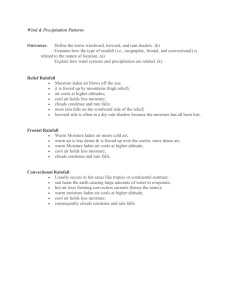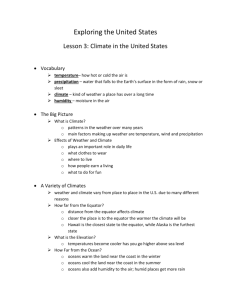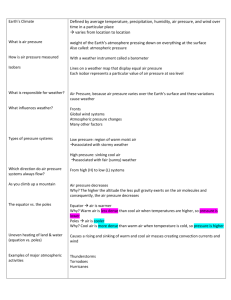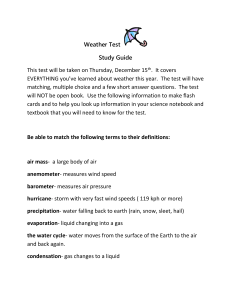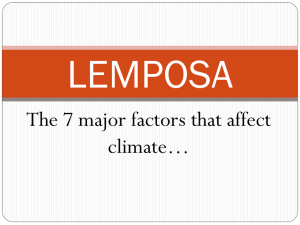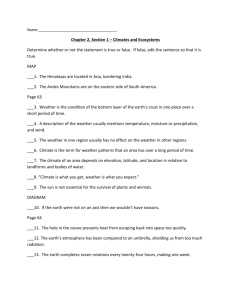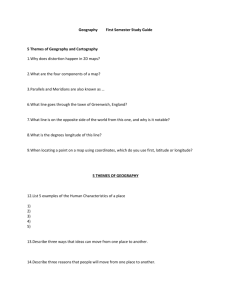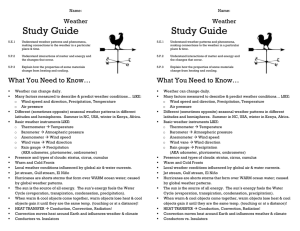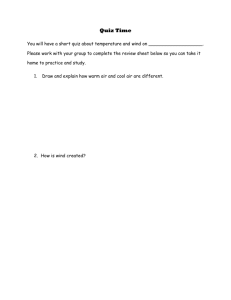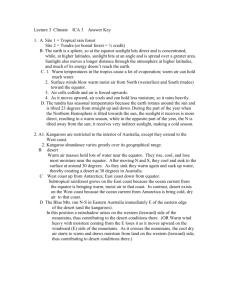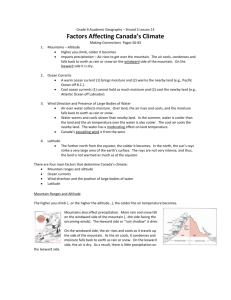2003 Document
advertisement
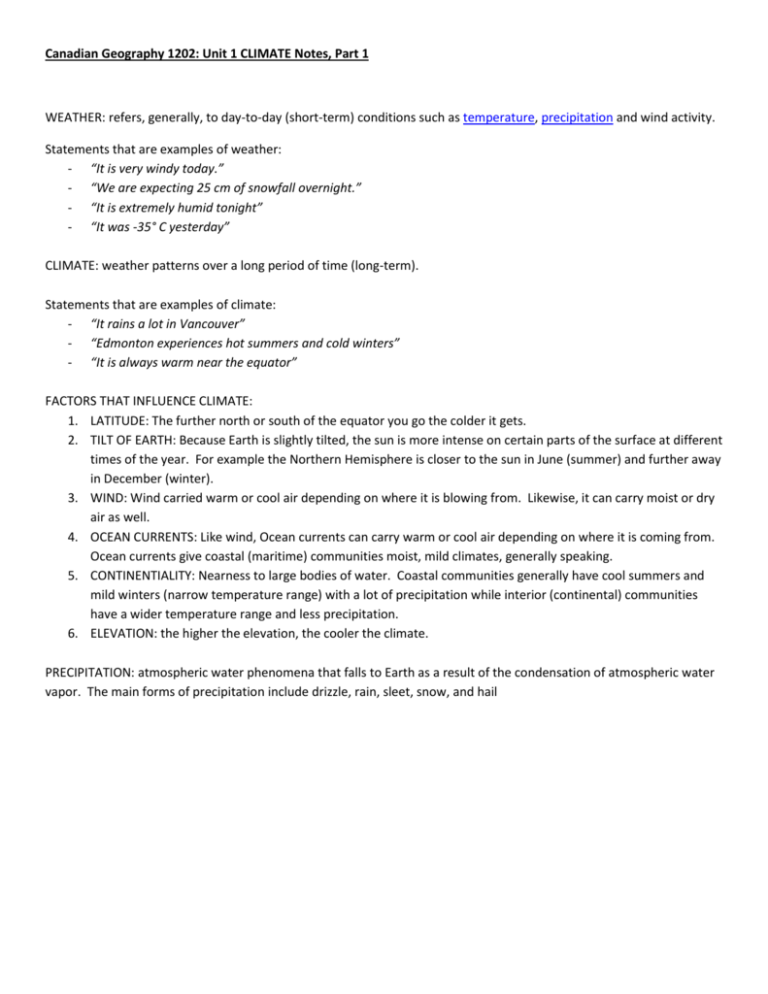
Canadian Geography 1202: Unit 1 CLIMATE Notes, Part 1 WEATHER: refers, generally, to day-to-day (short-term) conditions such as temperature, precipitation and wind activity. Statements that are examples of weather: - “It is very windy today.” - “We are expecting 25 cm of snowfall overnight.” - “It is extremely humid tonight” - “It was -35° C yesterday” CLIMATE: weather patterns over a long period of time (long-term). Statements that are examples of climate: - “It rains a lot in Vancouver” - “Edmonton experiences hot summers and cold winters” - “It is always warm near the equator” FACTORS THAT INFLUENCE CLIMATE: 1. LATITUDE: The further north or south of the equator you go the colder it gets. 2. TILT OF EARTH: Because Earth is slightly tilted, the sun is more intense on certain parts of the surface at different times of the year. For example the Northern Hemisphere is closer to the sun in June (summer) and further away in December (winter). 3. WIND: Wind carried warm or cool air depending on where it is blowing from. Likewise, it can carry moist or dry air as well. 4. OCEAN CURRENTS: Like wind, Ocean currents can carry warm or cool air depending on where it is coming from. Ocean currents give coastal (maritime) communities moist, mild climates, generally speaking. 5. CONTINENTIALITY: Nearness to large bodies of water. Coastal communities generally have cool summers and mild winters (narrow temperature range) with a lot of precipitation while interior (continental) communities have a wider temperature range and less precipitation. 6. ELEVATION: the higher the elevation, the cooler the climate. PRECIPITATION: atmospheric water phenomena that falls to Earth as a result of the condensation of atmospheric water vapor. The main forms of precipitation include drizzle, rain, sleet, snow, and hail THE THREE TYPES OF RAINFALL: 1. FRONTAL RAINFALL Warm Moisture laden air meets cold air; warm air is less dense & is forced up over the cooler, more dense air; warm Moisture laden air cools at higher altitude; cool air holds less moisture; clouds condense and rain falls. 2. CONVECTIONAL RAINFALL Usually occurs in hot areas like tropics or continental summer; sun heats the earth causing large amounts of water to evaporate; hot air rises forming convection currents (hence the name); warm moisture-laden air cools at higher altitude; cool air holds less moisture; consequently clouds condense and rain falls. 3. RELIEF / OROGRAPHIC RAINFALL Moisture laden air blows off the sea; it is forced up by mountains (high relief); air cools at higher altitudes; cool air holds less moisture; clouds condense and rain falls; most rain falls on the windward side of the relief; leeward side is often in a dry rain shadow because the moisture has all been lost. CLIMOGRAPHS A climograph is a graphical representation of the basic climatic parameters, that is monthly average temperature and precipitation, at a certain location. It is used for a quick-view of the climate of a location. LATITUDE The equator is 0°. The further north or south from the equator you go, the colder it becomes. The most southerly point of Canada is about 41 oN near Point Pelee in Lake Ontario. Most of Canada is north of 49°N. It is a long way north of the equator, and thus, it is cool. The colder northern latitudes are due to the angle at which the sun’s rays strike the Earth. The sun’s rays strike the equator in a very concentrated area, and thus, the rays only heat a small area of the Earth’s surface. The heat energy from the sun is very intense at the equator. In contrast, the sun’s rays at higher latitudes strike the Earth in a very spread out area…due, in part, to the Angle of Incidence (about 23°). Since the same amount of energy in the sun’s rays must heat a larger area, the area is cooler TILT OF EARTH <-----SUN JUNE DECEMBER
